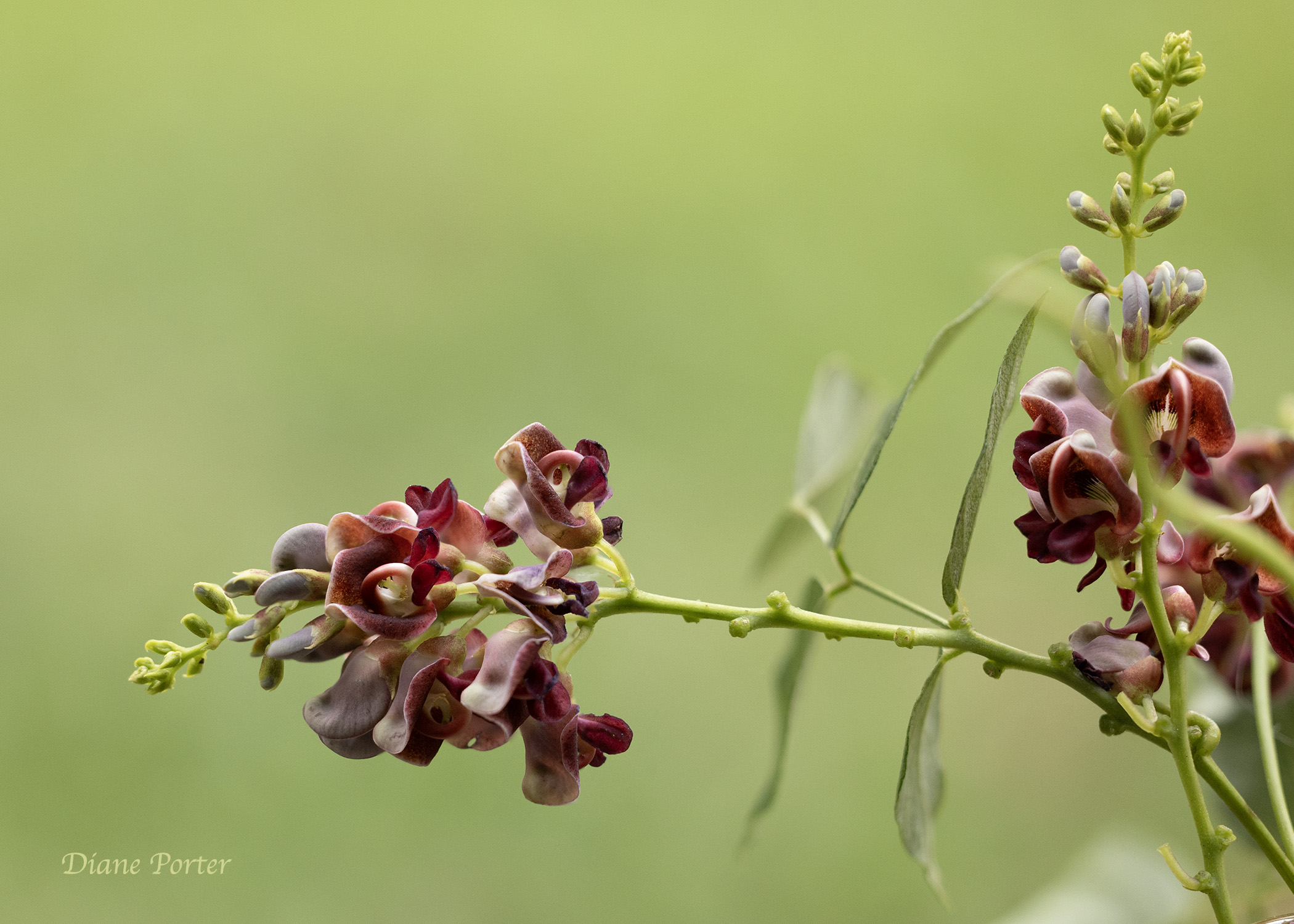Diane Porter of Fairfield first published this post on My Gaia, an email newsletter “about getting to know nature” and “giving her a helping hand in our own backyards.” Diane also maintains the Birdwatching Dot Com website and bird blog.
Walking a damp trail at the woods edge, I’m surrounded by flowers. Pink and purple clusters of blossoms dangle from low branches and brush my face.
This is Groundnut (Apios americana), a native flowering vine of North America. It creates a magical feeling, like a lovers’ bower in a fantasy.

I had seen few groundnut flowers in recent years. It’s been so dry. This year, however, we’ve had rain. Now groundnut is clambering through everything. Graceful vines strew my path, where I try not to step on the flowers. They wind their way up ten feet high through small trees. From there blossoms droop over the path.
Stem with three compound leaves and a new flower cluster forming at the base of each leaf:

The stems wrap their neighbors tight. It took me 15 minutes to unwind a length of groundnut from the plants it entwined so that I could see which leaves belonged to it.
The flowers are fancy as an orchid, with elaborate structures. Groundnut flower cluster:

Magnified view of individual blossom:

Groundnut is valuable for fixing nitrogen and improving the soil. It belongs to the pea family, Fabaceae. We eat its relatives, such as snow peas, green beans, peanuts, and lentils.
This plant also makes edible beans. And small, underground tubers that grow along the roots like beads on a necklace. I’ve never eaten one, but they’re said to be like unusually tasty and nutritious potatoes.
A small green pollinator finds nutrition in a groundnut blossom:

Photo of groundnut tubers is by Malte, licensed under the Creative Commons Attribution-Share Alike 3.0 Unported license, available via Wikimedia Commons.

In a world of many rampant things, I treasure a living being that provides food, soil enhancement, and extraordinary beauty.
Like groundnut.

Names
Plant family: Legume family (Fabaceae)
Scientific name: Apios americana
Common name:
A few of the many names of this plant are Groundnut, Indian potato, potato bean, hopniss, pea vine, wild bean, ground bean, wild potato, wild sweet potato.
Where it lives
Range Map of Groundnut, by BONAP (The Biota of North America Program). Light green means found in a county. Dark green means found in the state but not the county.



1 Comment
What lovely photos!
Besides being very interesting, this post is an indirect example of why original Iowa woodlands cannot be replaced by tree plantings on cornfields, and why it is so important to protect the originals.
I attended an ecological meeting years ago at which attendees were asked “What is the most important part of an oak woodland?” Most of us answered “The old oaks.” And it’s true that a hundred-year-old oak takes a hundred years to replace. But the real answer was “the soil.” Original woodland soil is teeming with life, ranging from thousands of species of tiny microorganisms and invertebrates to the seeds and spores of all the trees, flowers, vines, ferns, etc. Old oaks die over time and are replaced by new oaks. But when the soil is destroyed, the woodland is gone.
PrairieFan Sun 1 Sep 5:08 PM